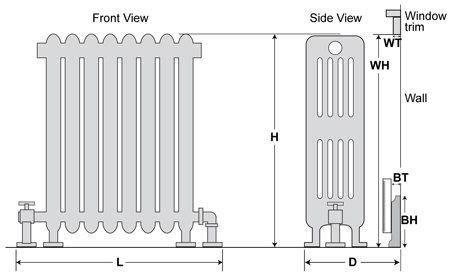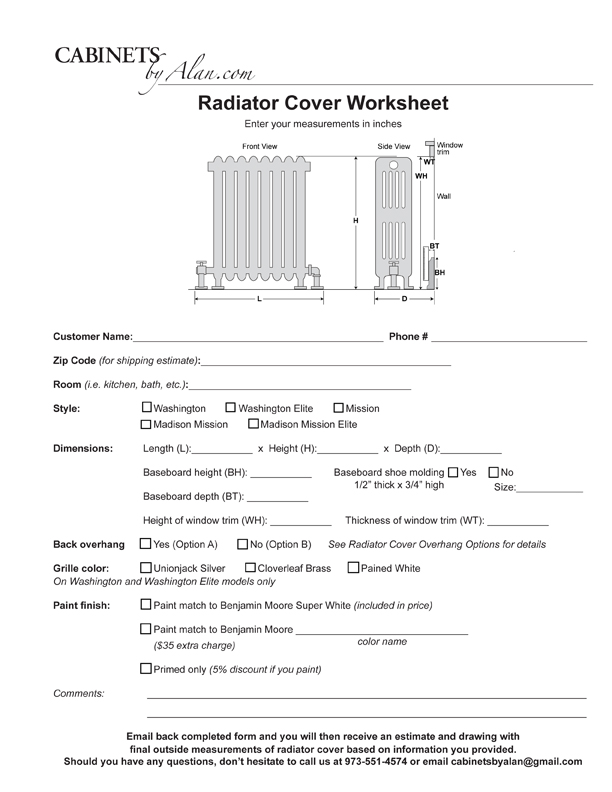RADIATOR COVERS
Measuring Instructions and Worksheet
Radiator Cover Measuring Instructions
Ordering Your Radiator Covers Is Easy!
Please take radiator measurements in inches. Note your measurements, style preference, etc. on our worksheet below, which you will then email back to us so that we may provide you with a drawing indicating final outside dimensions of radiator cover and an estimate based on your information.
Please note that most radiators are not parallel to the wall and some floors are out of level, so be sure to measure on both ends of the radiator for height and depth and give us the largest dimension.
The material we use is 3/4” thick. The cover will be made with 1” clearance around the radiator on the inside of the radiator cover.
If your radiator is under a window, you may want to extend the measurement to fit centered under the window.
Email us some pictures of your radiator. They can be very helpful.

LENGTH:
Measure the overall length (L) of your radiator including any valves, pipes and feet.
HEIGHT:
Measure the overall height (H) of your radiator from the floor up to the highest point of your radiator including any valves and pipes.
DEPTH:
Measure the overall depth (D) of your radiator from the wall behind the radiator to the front, including any valves, pipes, and feet.
BASEBOARD:
Measure the height of the baseboard (BH) from the floor up. Be sure to measure from floor and not from top of shoe molding.
Measure the thickness of the baseboard (BT) from the wall. For ease in doing this place a straight edge, such as a ruler (as shown in illustration), against the base board then measure out from wall with another ruler. Generally this thickness is 1/2” to 3/4”. Typical shoe molding is 1/2” thick x 3/4” high. If yours differs, please let us know.
WINDOW TRIM:
If radiator cover is going under a window, measure the distance (WH) from the floor to the bottom of the window trim, and also the thickness of trim (WT), as shown in illustration.
Radiator Cover Overhang Options
You have two options for how your radiator cover sits against the wall.
With Option A the back of your radiator cover has an overhang of 1”. This cover will then sit away from the wall in the back on the sides.
With Option B there is no overhang and the radiator cover fits completely tight against the wall for a more custom look.
You provide me with the depth (D) and the height (H) of the baseboard and I will make you a cutout as shown. I think it looks nicer than Option A, since it allows the back of the radiator to sit flush against the wall. Also let me know if there is shoe molding and I will cut that out to fit.
The cutout and shoe molding cutout are free of charge as long as you provide the measurements.

Enter your measurements on our Radiator Cover Measurements Worksheet


